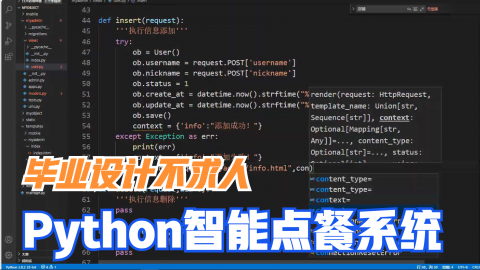Dff
这一节终于开始时序电路了。首先是一个用的最多的D触发器。
module top_module ( input clk, // Clocks are used in sequential circuits input d, output reg q );// // Use a clocked always block // copy d to q at every positive edge of clk // Clocked always blocks should use non-blocking assignments always@(posedge clk) begin q <= d; end endmodule
Dff8
8位D触发器,写法和上一题是一样的。
module top_module ( input clk, input [7:0] d, output [7:0] q ); always@(posedge clk) begin q <= d; end endmodule
Dff8r
带同步高电平复位的D触发器。
module top_module ( input clk, input reset, // Synchronous reset input [7:0] d, output [7:0] q ); always@(posedge clk) begin if(reset) q <= 'd0; else q <= d; end endmodule
Dff8p
注意这道题触发器是下降沿触发。
module top_module ( input clk, input reset, input [7:0] d, output [7:0] q ); always@(negedge clk) begin if(reset) q <= 'h34; else q <= d; end endmodule
Dff8ar
这道题是异步复位,把areset写在敏感事件列表即可。
module top_module ( input clk, input areset, // active high asynchronous reset input [7:0] d, output [7:0] q ); always@(posedge clk or posedge areset) begin if(areset) q <= 'd0; else q <= d; end endmodule
Dff16e
这题多了一个字节使能信号,只有对应的字节使能才能写入,否则维持当前的值。
module top_module ( input clk, input resetn, input [1:0] byteena, input [15:0] d, output [15:0] q ); always@(posedge clk) begin if(~resetn) q <= 'd0; else q <= {byteena[1]?d[15:8]:q[15:8],byteena[0]?d[7:0]:q[7:0]}; end endmodule
Exams/m2014 q4a
这题要求使用一个latch,latch是电平触发的触发器,当ena信号为高电平时输入会传递给输出,这样的缺点是毛刺(glitch)会逐级传递,所以应尽量避免综合出不必要的latch,这一点在前面if和case语句中提到过。
提示中告诉了这里应该使用非阻塞赋值,因为其仍然是时序电路。
module top_module ( input d, input ena, output q); always@(*) begin if(ena) q<=d; end endmodule
Exams/m2014 q4b
module top_module ( input clk, input d, input ar, // asynchronous reset output q); always@(posedge clk or posedge ar) begin if(ar) q <= 'd0; else q <= d; end endmodule
Exams/m2014 q4c
总放些重复的题有点浪费时间。。。
module top_module ( input clk, input d, input r, // synchronous reset output q); always@(posedge clk) begin if(r) q <= 'd0; else q <= d; end endmodule
Exams/m2014 q4d
module top_module ( input clk, input in, output out); always@(posedge clk) begin out <= in^out; end endmodule
Mt2015 muxdff
这道题只要写出一个子模块即可。
module top_module ( input clk, input L, input r_in, input q_in, output reg Q); always@(posedge clk) begin Q <= L?r_in:q_in; end endmodule
Exams/2014 q4a
同样也是写一个子模块。
module top_module ( input clk, input w, R, E, L, output Q ); always@(posedge clk) begin Q <= L?R:(E?w:Q); end endmodule
Exams/ece241 2014 q4
根据RTL视图直接写代码就可以了。
module top_module ( input clk, input x, output z ); reg [2:0]Q=3'd0; always@(posedge clk) begin Q[0] <= x^Q[0]; Q[1] <= x&~Q[1]; Q[2] <= x|~Q[2]; end assign z=~|Q; endmodule
Exams/ece241 2013 q7
使用verilog实现一个JK触发器。
module top_module ( input clk, input j, input k, output reg Q); always@(posedge clk) begin case({j,k}) 2'b00:Q<=Q; 2'b01:Q<=1'b0; 2'b10:Q<=1'b1; 2'b11:Q<=~Q; endcase end endmodule
Edgedetect
用了两个always,其实和答案是一样的。
module top_module ( input clk, input [7:0] in, output reg[7:0] pedge ); reg [7:0] in_r; always@(posedge clk) begin in_r <= in; end always@(posedge clk) pedge <= in&~in_r; endmodule
Edgedetect2
和上一题思路是一样的,区别是逻辑改为异或。
module top_module ( input clk, input [7:0] in, output reg[7:0] anyedge ); reg [7:0] in_r; always@(posedge clk) begin in_r <= in; anyedge <= in_r^in; end endmodule
Edgecapture
capture和detect区别:capture会保持1,直到reset。
out <= (~in&in_r)|out;代表只有1会传递到out,从而达到保持的作用。
module top_module ( input clk, input reset, input [31:0] in, output reg[31:0] out ); reg [31:0] in_r; always@(posedge clk) begin in_r <= in; if(reset) out <= 'd0; else if(~in&in_r) out <= (~in&in_r)|out; end endmodule
Dualedge
要求写一个双边沿触发器,题目已经告诉了@(posedge clk or negedge clk)的写法是不被允许的。
这题确实没想到好的方法,我的写法可能会产生毛刺,因为在边沿的时候q_p和q_n需要时间跳变,这个时候输出就可能有问题,当然,这样仿真还是能通过的,但实际电路中不能这样写。
题目给的答案非常巧妙,上升沿时p变为d^n,所以输出q = (p^n) = (d^n^n) = d,下降沿同理。
我的答案:
module top_module ( input clk, input d, output q ); reg q_p,q_n; always@(posedge clk) q_p <= d; always@(negedge clk) q_n <= d; assign q = clk?q_p:q_n; endmodule
标准答案:
module top_module( input clk, input d, output q); reg p, n; // A positive-edge triggered flip-flop always @(posedge clk) p <= d ^ n; // A negative-edge triggered flip-flop always @(negedge clk) n <= d ^ p; // Why does this work? // After posedge clk, p changes to d^n. Thus q = (p^n) = (d^n^n) = d. // After negedge clk, n changes to d^p. Thus q = (p^n) = (p^d^p) = d. // At each (positive or negative) clock edge, p and n FFs alternately // load a value that will cancel out the other and cause the new value of d to remain. assign q = p ^ n; // Can't synthesize this. /*always @(posedge clk, negedge clk) begin q <= d; end*/ endmodule
文章来源: 博客园
- 还没有人评论,欢迎说说您的想法!





 客服
客服


